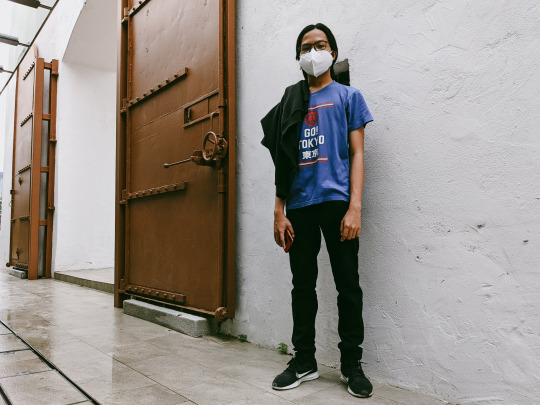Text
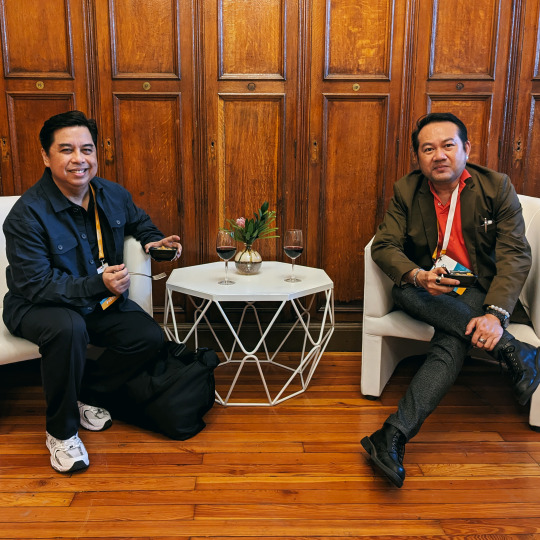
Jove and Anucha at Cape Town City Hall. March 7, 2024. Photograph by Alifah Zainuddin
I was very fortunate to meet some incredible people on this trip, especially fellow journalists. Anucha (Bangkok Post, Thailand), Jove (One News, Philippines), and I bonded instantly over our Southeast Asian identity and stuck together for most of the trip.
It was also a pleasure to meet Natalia (Reforma, Mexico) and Ana (El Pais, Spain). Despite my very limited Spanish (from watching telenovelas) and Natalia’s minimal English, somehow, we connected. Life is beautiful like that.
0 notes
Text

Food tasting at an art gallery in Langa. March 7, 2024. Photograph by Alifah Zainuddin
We then took a stroll around Langa, stopping at different spots like the old beer hall and makeshift meat stalls, where local women prepared and sold ‘braai’ (barbecue meat). Sheep’s head, or ‘Smiley’, is a popular braai meat.
After our walk around the township, we had the chance to taste some local food, including braai, at an art gallery in Langa. There were vegetarian options such as chakalaka, beetroot salad, creamed spinach, along with ginger beer, and steamed bread, which I opted for.
0 notes
Text

Drum lessons in Langa
March 7, 2024. Photograph by Bloomberg Philanthropies
Our walking tour began with some djembe drum lessons at the Guga S'Thebe Arts & Cultural Centre, where we learned basic drum patterns and sang along to a Xhosa song.
A short walk from the arts and cultural centre is the Langa Dompas Museum. We were briefed on how the building once served as offices of the Bantu Affairs Administration, responsible for issuing passes that black Africans had to carry in "white" areas during apartheid.
0 notes
Text
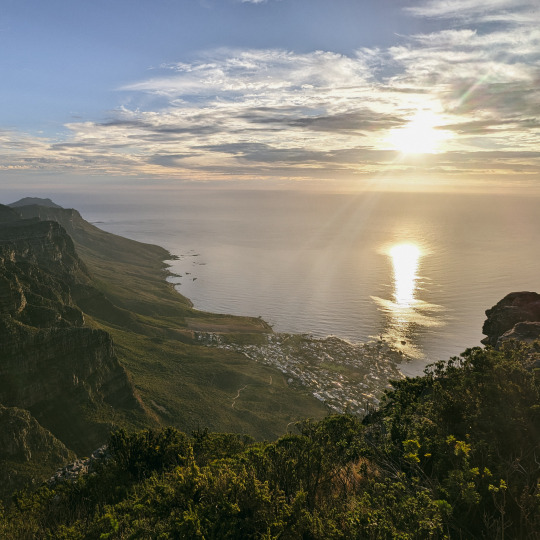
View from the top of Table Mountain. March 6, 2024. Photograph by Alifah Zainuddin
After our Robben Island trip, we boarded a bus from the hotel to the Table Mountain Aerial Cableway. The cable car transports visitors from the bottom station to the top in under five minutes.
The cable car’s rotating floor allows all visitors to enjoy a 360-degree aerial view of the city on the way up (and down).
We were truly blessed to have clear weather the entire evening, which allowed us to witness and enjoy a beautiful sunset from the top of Table Mountain during our evening reception.
0 notes
Text

Corridor between communal cells in D Section. March 6, 2024. Photograph by Alifah Zainuddin
We were fortunate to have Mr Sipho Msomi lead the tour inside the prison. Mr Msomi had been imprisoned for five years for his involvement with the African National Congress (ANC) and efforts to end the apartheid regime.
The prison had several sections from A to G. Some sections had small, individual cells, while others had communal cells that could house up to 60 prisoners each. C Section was for solitary confinement. Nelson Mandela and other political leaders were kept in B Section.
0 notes
Text
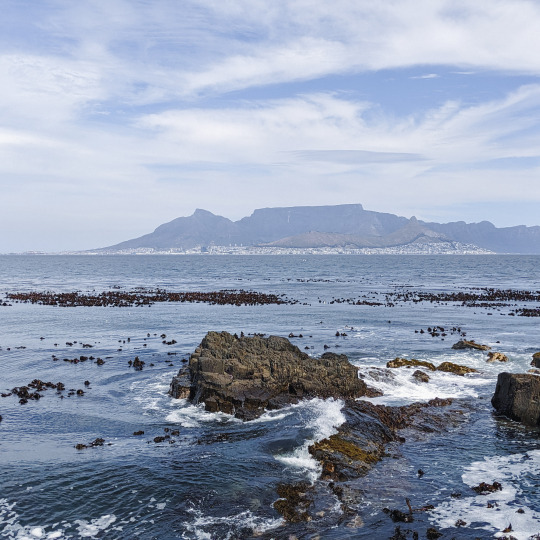
View of Cape Town from Robben Island. March 6, 2024. Photograph by Alifah Zainuddin
The summit featured a couple of site visits. I was among the group that visited Robben Island.
Robben Island is approximately 9.6km from Cape Town. It served various purposes between the 17th and 20th centuries, functioning as a military base, a hospital for socially marginalised groups (persons with leprosy and mental disorders), and a maximum security prison where political prisoners, including Nelson Mandela, were detained during the apartheid era. The rough, shark-infested seas made escape difficult.
Today, the island is a world heritage site that celebrates the triumph of the human spirit over oppression.
The entire tour took about 3.5 hours, including ferry trips to and from the island that took about 20-30 mins each way.
0 notes
Text
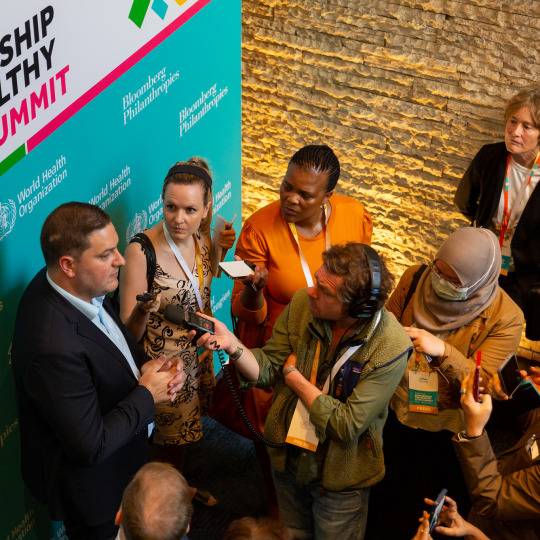
Press conference with Cape Town mayor Geordin Hill-Lewis. March 6, 2024. Photograph by Bloomberg Philanthropies
I spent the last few days in Cape Town to cover the Partnership for Healthy Cities Summit 2024 #Cities4Health for CodeBlue. The summit brings together city leaders from around the world to exchange best practices in areas such as tobacco control, road safety, and food policy to create safer and healthier cities.
Kuala Lumpur's work with the Partnership primarily focuses on increasing compliance with smoke-free laws and expanding designated smoke-free areas. More of this in our report.
It was also inspiring to see how actively involved South African youths are in advocating for the passage of the country's new tobacco control bill. Malaysia can definitely learn from this.
Here's my coverage of the event:
DBKL, Global Urban Network Exploring Tobacco Display Bans In KL
‘Nothing For Us, Without Us’: How South African Youths Champion Tobacco And Vape Control
Cape Town’s HIV Success Paves Way For Battle Against NCDs
0 notes
Text
Four Rings
I went to Tsutaya Books at Pavilion Bukit Jalil today. It was refreshing, but Kinokuniya still tops my list.
I didn't feel like getting anything too heavy, so I browsed the magazines section and picked up the Audi issue of Magazine B.
Although I'm not particularly into cars, I grew up with my father working in the automotive industry, and Audi was among the companies he worked with.
I bought the magazine because I wanted to gain some creative insights and perspectives about Audi as a brand. Of all the companies my father worked with, Honda and Audi hold special meaning for me.
Honda, because my father was very much involved in taking Honda 'to the next level' in Malaysia during the early 2000s, with the establishment of the manufacturing plant in Melaka.
I remember him returning very late from work on days he had to prepare for new car model launches, organise Honda roadshows at major shopping malls, or host the Honda Formula 1 team (Button-Sato era) when they were in town.
But that was Honda.
Some time after Honda, my father joined Audi (Euromobil), and I've loved Audi's designs ever since. Unlike BMW or Mercedes, Audi has this subtle elegance that I love.
As I read through the magazine, it's heartening to see that others also perceive Audi as "modest," "soft yet clean," and "sophisticated."
I came across a two-page spread of Audi billboard ads — just like the ones we had here in Malaysia — which brought back memories of our family drives after dinner to see the new ads.
I loved how clean yet striking they looked. You couldn't miss them, and I don't think anyone could look away once they saw them.
The magazine also featured images of "Audi Terminal" showrooms with their signature aluminum façade, just like the one in Glenmarie where we often dropped off my little brother on Fridays so my father could take him to a nearby mosque for prayers.
I don't dream of replacing my Proton Iriz. I think it's the perfect car for me now. But if I had the means to upgrade (and maintain), I'd go for an Audi.
1 note
·
View note
Text
youtube
Those late-night drives with my grandparents, listening to Klasik Nasional, were special.
0 notes
Text
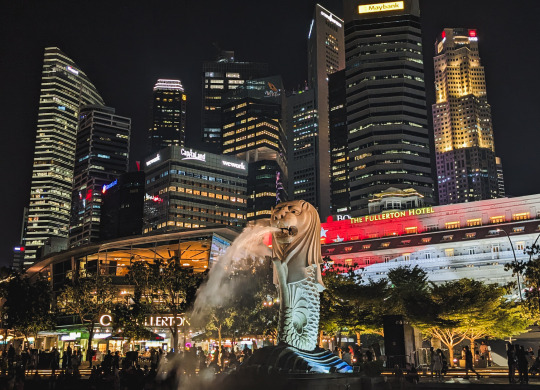
Merlion Park, Singapore. September 11, 2023. Photo by Alifah Zainuddin
0 notes
Text
Ooh To Be A Gooner
In many of the decisions I've made in life that I felt were important, it mostly came down to a gut feeling of whether something felt right or wrong.
It's incredible when I look back at how I became an Arsenal fan two decades ago, it was also down to just that — a feeling.
My earliest memory of being an Arsenal fan was when I was 10 years old. I loved hanging out with the boys at school and that very often meant talking about football.
Our school had two sessions, one in the morning and another in the afternoon. We were in the afternoon session at that time. Every day, students in the afternoon session would have to gather at this assembly area in school before we could enter our classes.
It was during this time that the boys would often sit closely in groups and talk about football and have little banters between them about their teams. For me to participate in that conversation, I needed a team.
I didn't know much about football at that time. I didn't know a lot of teams or players, what more the fixtures, rules, or competitions.
I guess playing PES on PlayStation helped a bit but I didn't truly appreciate the game. I just needed a team to join the boys.
I have no memory of how Arsenal was first introduced to me, but I remember thinking that Manchester United and Liverpool felt "overrated" because everyone who spoke about football were supporting either of these two teams at the time. I had one friend who supported Chelsea but I didn't feel the connection.
Arsenal, however, felt right, and so Arsenal became my team.
I didn't know the players, but I heard Thierry Henry and Dennis Bergkamp were legends. My first impression of Arsène Wenger was that he looked a lot like my grandfather.
All that mattered then was that I could be part of the boys' little banter club. It was the boys who would tell me that Arsenal had won or lost a game and what that meant in terms of the club's standing in the league table or cup competition.
Over the years, I became more aware of the team and the game.
Cesc Fàbregas was the first player I became a fan of. I started watching Arsenal games late at night, going through the joys and pains of each game, buying club kits, learning about the league, the cups, the club's history, and cultivating that deep desire to win.
Then there was the unmissable chance of watching Arsenal live on their 2011 Asian tour, and not long after that, the anguish of Cesc leaving for Barcelona.
A few years after that were the 'Wenger Out' years. Those were the hardest. I distanced myself from the club, only checking the scores every now and then.
It wasn't until recently that I started to reconnect with the club again, and with football, in general. Last season was special for Arsenal and the fans, and Super Mik Arteta has done wonders to bring back the love and belief in the club.
For me, this marks another chapter of learning and appreciating football at a more refined and tactical level, and to love and understand Arsenal more meaningfully and deeply.
I've also taken a keen interest in the Arsenal Women's team as they continue to raise the bar in women's football. If I ever have the opportunity to visit Emirates Stadium, I hope to catch the women's team in action.
Like any football fan, I want every success for my club of over 20 years. Looking back, I never expected the game to shape me as a person. Hopefully, all for the better.
2 notes
·
View notes
Photo

My left index finger covered in indelible ink outside a polling station in Selangor. November 19, 2022.
0 notes
Text
What It Means To Be Malay-Muslim
I thank Ms Dina Zaman for prompting this discussion, or at least thinking, about what it means to be a Malay-Muslim in Malaysia. As she pointed out in her op-ed recently, the Malay ethnicity is diverse, and so my intention is to not speak for all, but merely share a reflection of what it means to me.
I am 30 this year. I’ve reflected on this time and again over the years, and I’d like to think that although I often arrive at the same conclusion at the personal level, the areas of consideration have been quite diverse.
Post-GE15 talks of a conservative “green wave” rising in Malaysia have opened up discussions about the Malay-Muslim identity, with various labels being used to make sense of what is happening like “Islamists”, “kampung”, “Shah Alam”, “Bangsar”, “educated” or “uneducated”.
There is a need to re-evaluate the implied meanings that come with these terms because x does not necessarily equate to y, especially not when the political landscape is fragmented.
The same labels used to describe the “other” are also the very labels supporters of that party or coalition subscribe to. This is where I ask myself the question, where do I fit in?
I went to both primary and secondary national schools. I’ve lived in Subang, Puchong, Shah Alam, and I’m now in Ara Damansara.
I went to UiTM where we sang the words “jangan mudah terlupa perjuangan anak bangsa” during orientation. I then went to UIA/IIUM where we studied Beowulf and Catch-22, alongside the Qur’an and hadith.
I love films. I enjoy the works of Stanley Kubrick and Georges Melies, as much as I enjoy the works of Mamat Khalid or P. Ramlee.
On my way to work or assignments in the morning, I would either listen to Qur’anic recitations or Islamic lectures on IKIM, or discussions on current affairs on BFM.
As I reflect on these things that make me a Malay-Muslim, I find myself moving from one side of the spectrum to the other, usually only by a few inches, and I think that’s the scary part – a thin (almost non-existent) line that supposedly separates “us” and “them”.
I know a lot of Malay-Muslims who believe in and want the same things for the nation. I chose who I chose in good faith. They made their choices too in good faith with the many “Malay-Muslim” options available.
On values, I am against racism and have a high regard for trust (amanah). God spoke against racism in the Qur’an (49:13) and the Prophet in his final sermon. Accountability is also deeply rooted in the faith and I expect the highest standard of this quality from people aspiring to be leaders.
On policies, I’m aware that a lot of the problems we face today that hinders our progress as a nation require serious reforms in the judiciary, health and education systems to make good governance and good leaders the norm.
The problem I feel is not the “other” but rather how politicians are dividing us further into trivial labels, pitting us against one another on how we dress, how we speak, where we live, or what music we listen to, which is ridiculous.
I know that the people who come off as frightening when they talk about “orang kita” are also the very people who will go out of their way to help their fellow Malaysians when in need. My two cents from this is just a simple reminder of who we all are in the end: humans.
Don’t let politics make us think any differently.
This article was published in Malay Mail on December 12, 2022.
0 notes
Photo

Merdeka Day at Dataran Merdeka, Kuala Lumpur. August 31, 2022. Photograph by Alifah Zainuddin
0 notes







